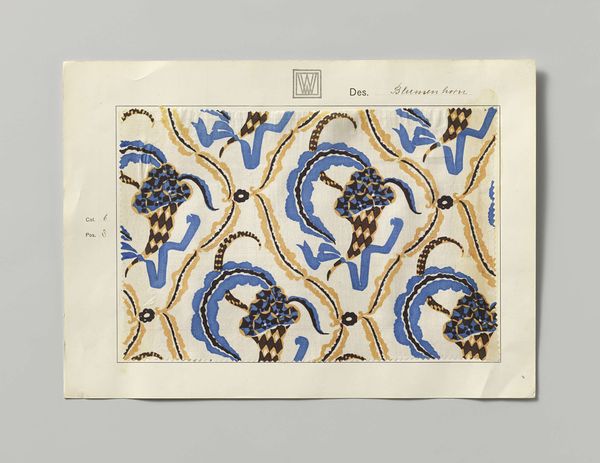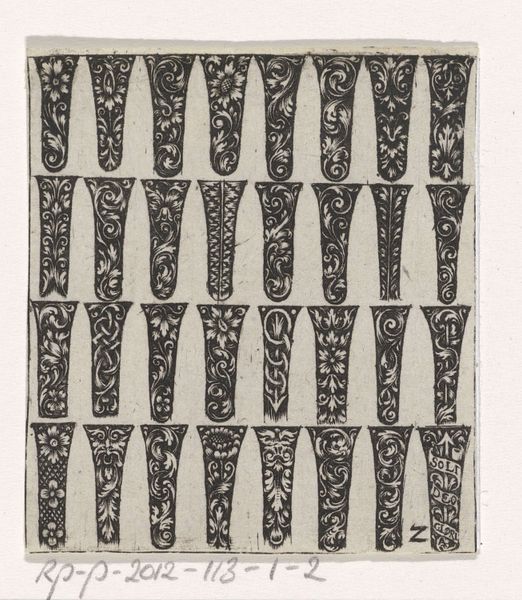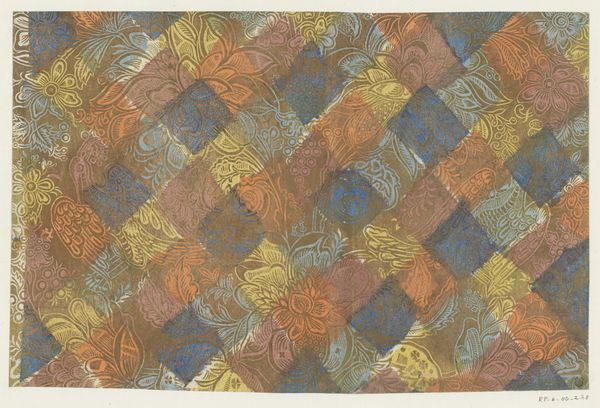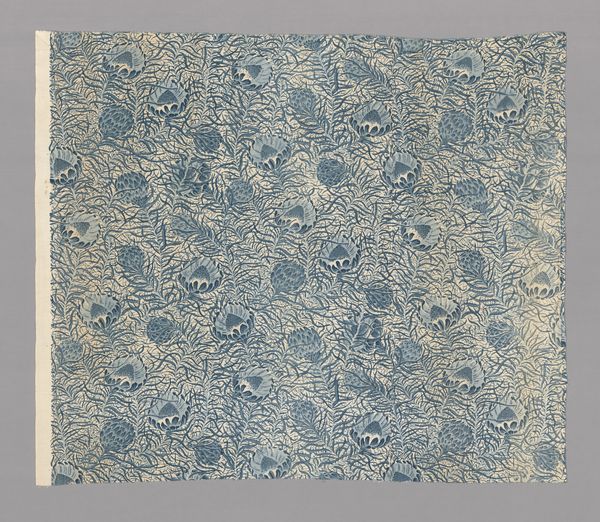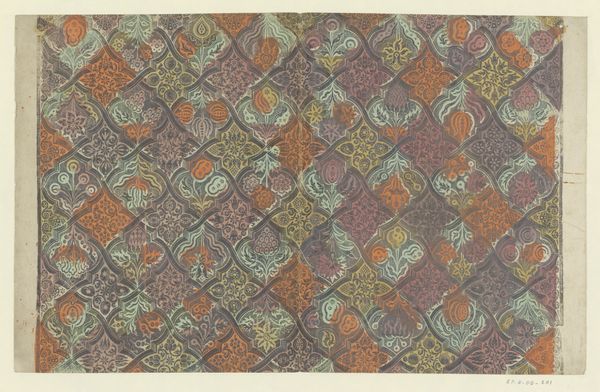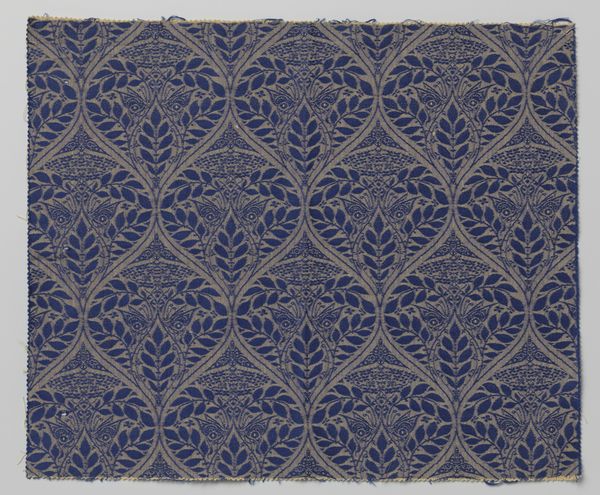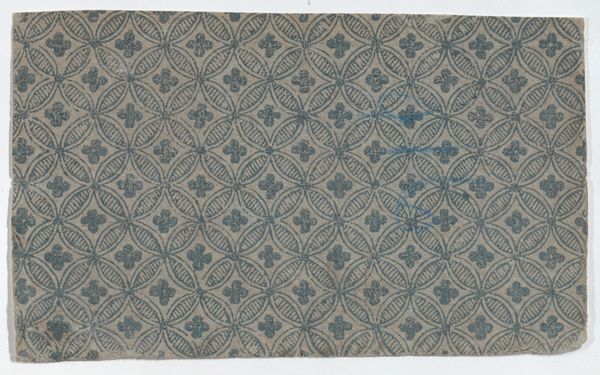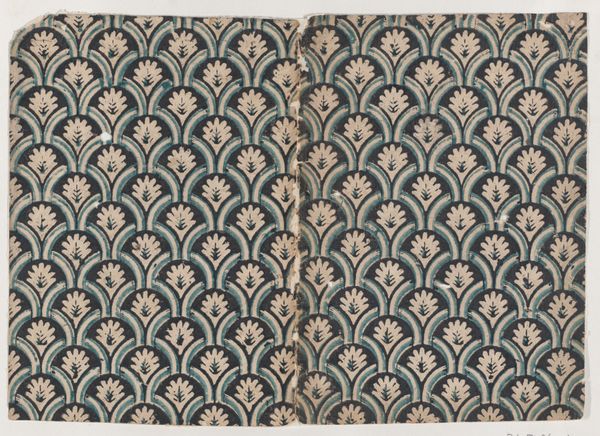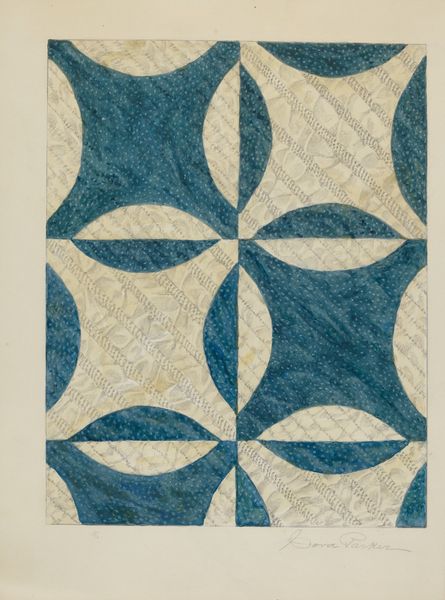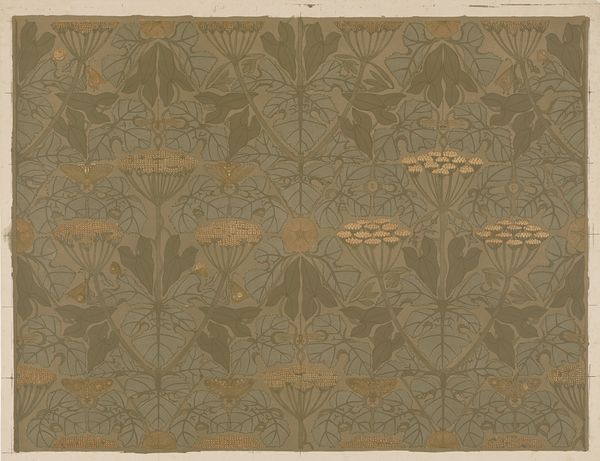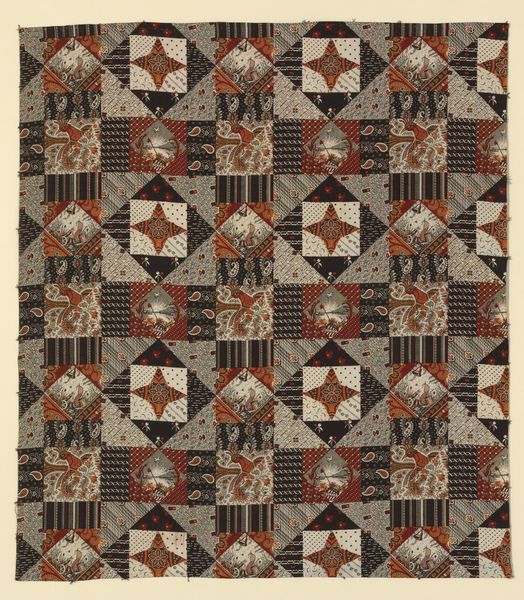
graphic-art, textile
#
graphic-art
#
art-nouveau
#
textile
Dimensions: height 25 cm, width 35 cm, height 19.4 cm, width 28.1 cm
Copyright: Rijks Museum: Open Domain
Curator: The design before us is named "Staal met bedrukte zijde, dessin Tanzpaar," which translates to "Steel with printed silk, design Dancing Couple," crafted in 1915 by Wiener Werkstätte. What strikes you upon seeing it? Editor: I'm immediately struck by its slightly unsettling energy. There’s something almost tribal about the dancing figures juxtaposed against those jagged geometric shapes. It makes me think of ritual and power dynamics. Curator: Indeed. The angularity certainly feels primal, doesn't it? Those dancing figures, repeatedly arranged, carry echoes of ancient motifs. This visual repetition could be seen to symbolize community and societal harmony. But tell me, do those zigzag lines remind you of something? Editor: Yes, they evoke both stylized mountain ranges and perhaps even defensive barricades, contributing to the feeling of tension I noted. Given the era, pre-war Vienna, I can’t help but see a reflection of societal anxieties creeping into what seems like a decorative pattern. Curator: Precisely! One might easily consider how Wiener Werkstätte sought beauty amidst gathering shadows. Observe also how those figures aren’t simply dancers, but gendered couples caught mid-motion, eternally performing a ritual that society, at large, finds celebratory. This creates a dynamic between celebration and, perhaps, restraint. What I see are shadows of tradition weighing upon freedom. Editor: That's an interesting reading. I wonder if this "dancing couple" motif subtly questions rigid gender roles within Viennese society at the time. A printed silk like this would likely have been displayed within affluent households, a silent, constant presence challenging established norms. Curator: Possibly a quiet rebellion through ornamentation. In textiles like this, cultural memories become activated by this interplay between aesthetic enjoyment and critical engagement with sociopolitical issues. It serves as an ancestor reminding us of our historical narrative. Editor: I agree. And analyzing the context in which these textiles were produced opens up fascinating ways of interpreting how people engaged with, or resisted, systems of power and gender. I think the contrast, for me, reveals the complex cultural conversations being woven into the fabric of everyday life. Curator: Indeed, bringing into the light those whispers which echo across decades makes the artwork truly dance, don’t you think? Editor: Absolutely, the pattern transforms into a dynamic expression of its historical moment, offering layers of meaning well beyond surface aesthetics.
Comments
No comments
Be the first to comment and join the conversation on the ultimate creative platform.
